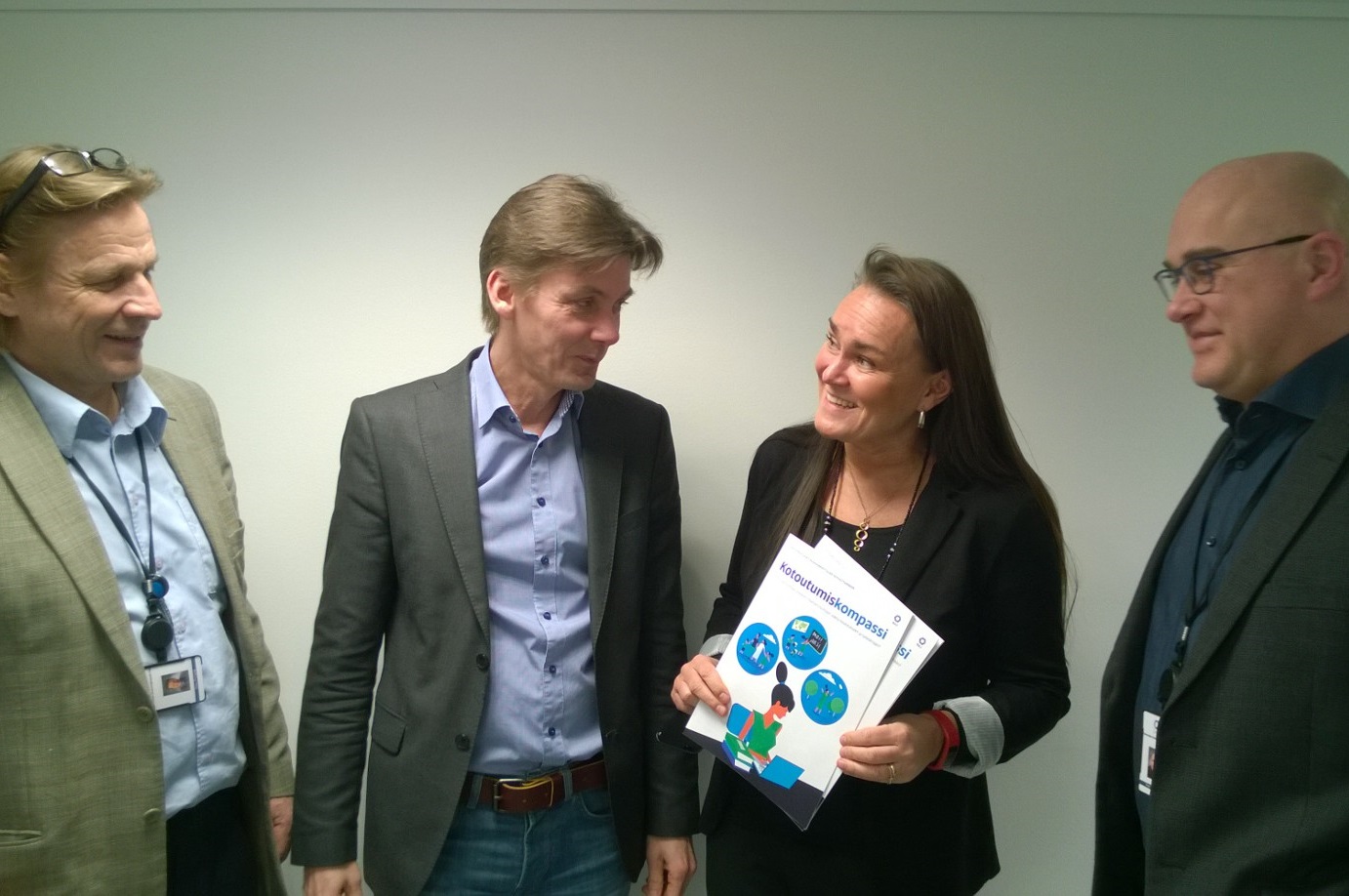Finnish teachers on educational integration of refugees and immigrants
Published:
Teachers are essential in integrating migrant and refugee children in education. The Finnish member organization of ETUCE, OAJ which has over 120 000 members representing about 95% of the teachers in the country, recently launched an interesting publication on integrating refugees and migrants in education. The publication is entitled: Integration Compass (In Finnish: Kotoutumiskompassi). We asked Ms Päivi Lyhykäinen, OAJ Special Adviser for Education to explain us the impact and use of the publication in education.
ETUCE: What were the reasons of launching this publication?
OAJ: Our trade union wants to promote multiculturalism and tolerance in Finland, to take global responsibility and to support teachers in multicultural education. Immigrants arrived to Finland in larger scale 20-25 years ago and settled down mostly in big cities. However, since the “refugee crisis” of last autumn, the immigration policies became more of the whole country´s issue.
We decided to make proposals for the government and municipalities to advance integration via education. The proposals are for all levels of education from early childhood education to adult education with strong emphasis on teaching of Finnish or Swedish, the official languages of Finland.
ETUCE: Whom the OAJ publication on integration of refugees and migrants addresses and who can use it?
OAJ: With this publication we addressed to Finnish government and decision makers, Finnish National Board of Education, Ministry of Education and Culture, local education departments, and teachers of course. We also want to speak out for teacher education. The publication is tailored for the Finnish education system and teachers, but it is possible to use these proposals in any other countries.
ETUCE: What were the reasons that the publication was very well received by the government and the Finnish media?
OAJ: During last autumn, refugees wave sparked the debate about integration of migrants. Thus, the timing of publication occurred suitable. However, we have had immigrants for quite a long time in Finland and in places where we have had immigrants, teachers have created good pedagogical practices. We have actively gathered information from individual teachers on their practices, experiences and problems they have come across. We wanted to bring these ideas to public debate and to support teachers in their work with immigrants. Furthermore, we have found many issues to improve in organizing the teaching of immigrants and we wanted to bring solutions to governing organizations.
ETUCE: What are your main recommendations to teachers and the government concerning integration for migrants and refugees in education?
OAJ: In our road map to social integration there are 9 main themes and there are several proposals for actions under each theme. The following are some of the most important proposals:
- Educational integration for adults has to start immediately when refugees arrive to Finland. Educational integration includes Finnish/Swedish language and culture studies. Now the education is organized under the Ministry of Employment and the Economy, but OAJ proposes that it should be brought under Ministry of Education and Culture.
- Early childhood education is very important concerning language development. OAJ proposes that there should be more teachers of Finnish/Swedish as a second language already in early childhood education and the group size of pupils should be adjusted to support learning and development of children´s language most effectively.
- All, whose mother tongue is not one of the national languages of Finland, should be entitled to learn Finnish or Swedish as a second language from early childhood education until the end of secondary education.
- Teaching of immigrants on their own mother tongue should be provided for everyone from early childhood to the end of the secondary education.
- Preparatory instruction for basic education must be an individual right of the pupils regardless where they start living in Finland. Now in Finland the municipality has a freedom of choice whether to organize preparatory instruction for basic education or not.
- Teacher education needs to be improved. Teachers should be better prepared in initial and continuous teacher training with skills for multicultural education. Finnish education system also needs more qualified teachers with immigrant background.
- The identification and recognition of prior learning for immigrants must be more flexible.
ETUCE: What is your message to other teacher unions / teachers and other governments on supporting migrant and refugee children?
OAJ: It is important that teachers are well educated. Teachers must have the skills to teach pupils and students from other culture. It is worth investing in teaching national language as a second language. Focusing on language learning and education are the best integration policy.
The publication is available in English
For more information please contact OAJ: This email address is being protected from spambots. You need JavaScript enabled to view it.